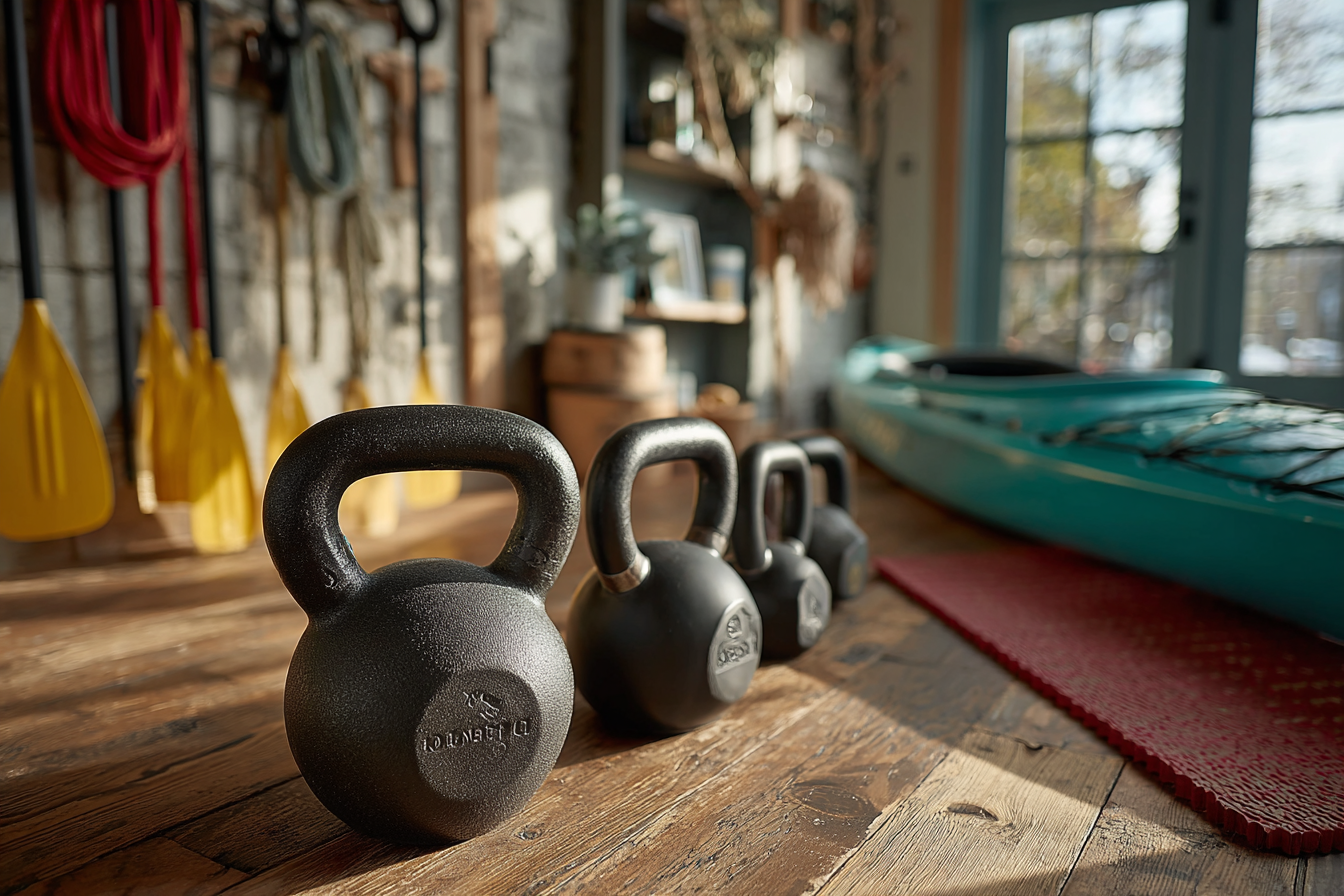When it comes to kayaking, physical fitness plays a crucial role in how well you perform on the water. Whether you’re paddling on calm lakes or tackling challenging whitewater rapids, having the right muscles engaged and endurance built can elevate your kayaking experience. But training for kayaking isn’t just about hopping on a treadmill or doing random strength exercises; it requires focusing on specific muscle groups and movements. That’s where specialized kayaking fitness training equipment comes in. By using the right tools, you can target the muscles that truly matter for paddling, enhance your cardiovascular capacity, and improve your flexibility and balance—all essential for effective and enjoyable kayaking.
Understanding Key Muscle Groups and Training Needs for Kayaking
Before diving into recommended equipment, it’s important to understand which parts of your body do the heavy lifting when kayaking. The main muscle groups involved include:
- Core muscles: This includes the abdominals, obliques, and lower back muscles responsible for stabilizing your body and generating power during each paddle stroke.
- Upper body: Your shoulders, arms (biceps and triceps), and upper back muscles drive the paddling motion.
- Lower body: While kayaking focuses more on upper body, strong legs and hips contribute to balance and support control of the kayak.
Since kayaking is a dynamic sport requiring endurance, strength, flexibility, and balance, your training regimen needs to be diverse. Cardiovascular fitness improves overall stamina, strength training targets paddling muscles, and mobility work ensures fluid and safe motion.
Top Equipment for Strength Training
Building muscle strength for kayaking means focusing on equipment that can help you mimic paddling motions and isolate key muscle groups. Here are some of the best tools to include in your workouts:
Resistance Bands
Resistance bands are a versatile and affordable tool that can be used to simulate the paddling stroke and strengthen the shoulders, arms, and upper back. They come in various resistance levels, so you can gradually increase intensity. Using bands allows for controlled, fluid movements similar to on-water paddling, which enhances functional strength.
Dumbbells and Kettlebells
Free weights like dumbbells and kettlebells help build overall upper body strength. Exercises such as rows, presses, and rotational movements target the muscles kayakers rely on. Kettlebells also help develop explosive power and core stability through dynamic moves.
Medicine Balls
Medicine balls are great for adding resistance to rotational exercises that mimic the twisting and turning motions of paddling. They help enhance core strength and coordination, which directly translates to better stroke efficiency on the water.
Pull-up Bars
Pull-up bars are excellent for strengthening your upper back and arms, essential muscle groups for powerful strokes. Adding pull-ups and hanging leg raises into your routine develops the strength and endurance your paddling demands.
Cardiovascular Training Tools Suited for Kayakers
Endurance is key in kayaking, especially for longer trips or intense whitewater runs. Cardiovascular tools that engage multiple muscle groups while boosting heart health work best for kayakers.
Rowing Machines
Rowing machines simulate the full-body, rhythmic motion that involves legs, core, and upper body. This helps develop endurance and strength simultaneously and closely relates to the movement patterns in kayaking.
Stationary Bikes
Although not mimicking paddling, stationary bikes are excellent cardiovascular tools that also improve leg endurance and support overall stamina.
Jump Ropes
Jump ropes are a simple and effective way to improve cardiovascular fitness, coordination, and agility. These benefits contribute indirectly to better balance and quick reactions on the water.
Mobility and Flexibility Equipment
Maintaining flexibility and joint mobility allows for smooth paddling motions and helps prevent injuries. Incorporating equipment designed for stretching and balance can significantly enhance your performance.
Foam Rollers
Foam rollers are ideal for self-myofascial release, reducing muscle tightness and improving mobility. Using them regularly on the back, shoulders, and hips helps keep tissues flexible and ready for kayaking.
Stability Balls
Stability or exercise balls boost core strength and balance—two critical components necessary for controlling your kayak in shifting water conditions. Performing exercises such as ball crunches, planks, and bridges challenges your stability muscles.
Yoga Mats and Stretching Straps
To improve overall flexibility, yoga mats provide a comfortable surface for stretching routines, while stretching straps assist in deeper, controlled stretching—targeting hamstrings, shoulders, and spine.
Setting Up a Practical Fitness Space for Kayaking Training
Having a dedicated workout space equipped with the right tools improves consistency and motivates your training. Here are tips for establishing an efficient area:
- Choose enough room: Ensure you have space to move freely, especially for exercises requiring bands or stability balls.
- Invest in versatile equipment: Selecting tools that serve multiple purposes saves space and money—like resistance bands and adjustable dumbbells.
- Create storage solutions: Keep your gear organized with shelves, hooks, or bins to maintain a clutter-free environment.
- Good flooring: Use mats or rubber tiles to protect floors and provide cushioning during exercises.
- Mirrors: Adding a mirror can help check your form and prevent injuries.
Maintenance and Safety Tips for Your Kayaking Training Gear
To prolong the life of your equipment and maintain safe workouts, regular maintenance and careful handling are essential.
- Regular inspection: Check resistance bands and straps for signs of wear or tears and replace if damaged.
- Clean your gear: Wipe down foam rollers, balls, and weights after use to prevent bacteria buildup.
- Proper storage: Store resistance bands out of direct sunlight to avoid material degradation, and keep weights dry to prevent rust.
- Safety first: Gradually increase intensity and use proper techniques to avoid strains or injuries during strength and cardio exercises.
By investing time and effort into setting up a quality fitness regimen with the right equipment, you set yourself up for more powerful, efficient, and enjoyable kayaking outings. Combining strength training, cardiovascular endurance, and flexibility work using specialized tools will help you paddle stronger, longer, and with better control. Gear up wisely and watch your kayaking fitness soar to new levels.







